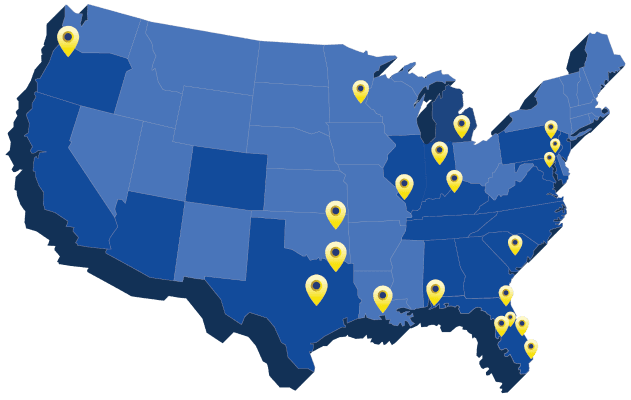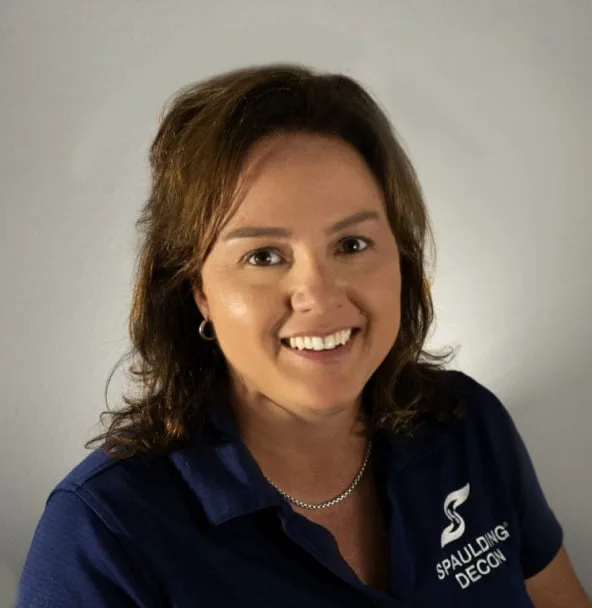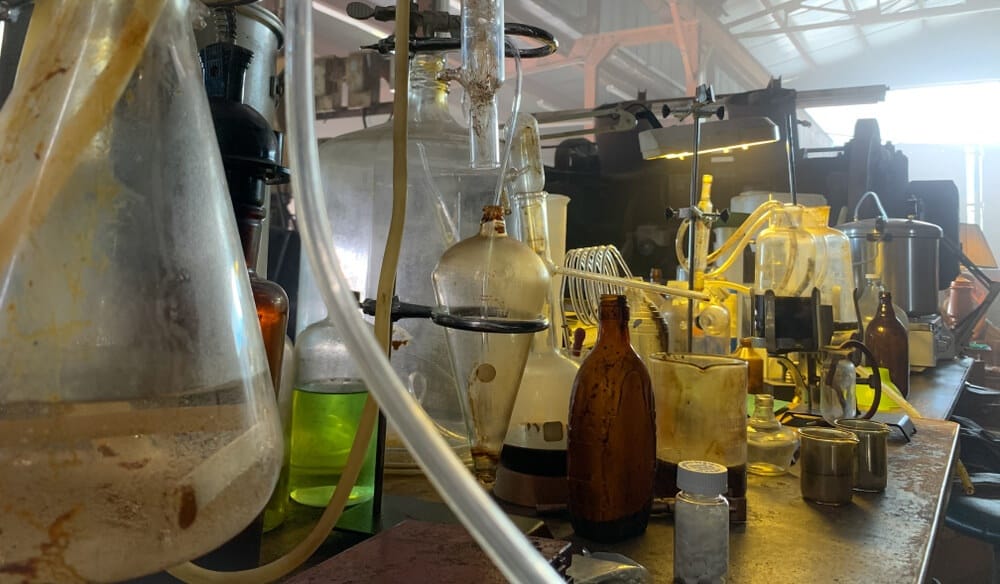Last updated: October 2025
What Is Meth and How Is It Made?
Crystal Methamphetamine, or meth, is a derivative of amphetamine. Amphetamine gained popularity as a nasal decongestant. It is a high-octane stimulant classified as a Schedule II substance by the US government.
Over-the-counter cold medicines that contain ephedrine or pseudoephedrine serve as the base for this drug. They are then combined and cooked with chemicals like acetone, freon, and phosphorus that cause a chemical crystallization to occur.
The ephedrine or pseudoephedrine combines with phosphorus or lithium. The next step is the addition of water. After the water comes a solvent like gasoline or acetone to extract the methamphetamine. The last step involves heat to form crystals. These chemicals found in nail polish remover, brake fluid, anti-freeze, and matches are all hazardous to humans and contribute to methamphetamine contamination in homes.
Warning: Meth production is extremely unstable. A wrong combination of these chemicals can lead to explosions, fires, or long-lasting contamination.
Critical and Top Signs of a Meth Lab in Your Home
Methamphetamines are a synthetic drug that’s highly dangerous to produce and consume. While consumption can have severe health consequences so can exposure to it. The sad truth in the case of many property owners is that what they think of as their brand new home could actually have been a meth lab. Living in a former meth lab can lead to the development of asthma, sleep irregularities, hyperactivity, and ADHD. Not only that, but former drug labs carry other safety issues.
Let’s look at some important numbers.
According to the Drug Enforcement Administration (DEA), there has been a steep decline in the number of clandestine meth lab seizures in the United States. In 2023, the DEA’s El Paso Intelligence Center (EPIC) reported only 60 domestic lab seizures. This is a stark contrast to the 23,700 labs seized in 2004. That being said, the lower number is no indication that your home wasn’t a meth lab. That’s why it’s so important to identify the signs and take the right actions to protect yourself and your family members.
Also, contamination is more common than you think. A 2024 study in Boulder, Colorado, found that approximately 3.5% of single-family homes and condominiums were contaminated with methamphetamine at levels exceeding the state’s health standard of 0.5 µg/100 cm².
Furthermore, it’s estimated that over 5 million residences in the U.S. may be contaminated above this health standard. The vast majority of this contamination (around 99%) is due to meth use (smoking), not manufacturing.
These houses of methamphetamine production are associated with other crimes. If you live in a former drug production hotspot, these unsafe aspects may still exist around you. If you suspect your new home was a meth lab, an investment in a meth lab testing kit is one of the best ways to find out. For more comprehensive results, hiring methamphetamine cleanup services ensures the property is thoroughly tested and decontaminated. These home kits test surfaces in your house for harmful meth production chemicals.
The signs of a meth lab can be subtle and often go unnoticed by untrained eyes, even during a professional home inspection. Knowledge is power so here are the top warning signs to look out for.
Worried About Meth Contamination? Spaulding Decon Offers Certified Testing and Cleanup Services.
On-site Chemicals
- Paint cans
- Jugs of anti-freeze
- Matches
Keep an eye out for an excessive amount of these chemicals. It is challenging because many of the items used in meth production are common household items. Be suspicious of an abundance.
Paraphernalia
- Look for numerous burnt glass beakers and tubes.
- Keep an eye out for items like abandoned propane grill tanks with blue corrosion around the nozzle or coffee filters with green stains.
- An abundance of burnt aluminum foil.
Wall Stains
Meth production creates iodine byproducts. These yellow or red stains on the walls could be a sign of its presence. If this harmful byproduct is present in your home, all drywall must be removed to ensure the safety of current occupants. The presence of iodine byproducts can cause serious health ramifications.
Did You Know? Meth residue can linger in walls and carpets for years, posing serious health risks to unsuspecting homeowners.
A Strong, Unidentified Odor
When you walk through your prospective new home, do you notice an odd odor? Meth production emits a strong odor from the chemicals used. This scent lives in the walls and lingers long after production ceases. A strong odor accompanied by stained drains is a big indicator of a former meth lab.
Other Steps to Take: Check the DEA Database
The Drug Enforcement Agency (DEA) keeps a registry of all houses that were identified as clandestine drug labs. This list is available to the public and is a great resource to check. With this list, you can also see if any homes in your new neighborhood were once drug labs.
What to Do If Your Home Was a Meth Lab
How to Test Your Home for Meth Residue – Quick Video Guide
If you’re dealing with nausea, headaches, or dizziness and can’t figure out why, this short video explains why symptoms alone aren’t proof of contamination and what to do next. The key takeaway: the only reliable way to know is to test interior surfaces. A standard DIY kit typically lets you test four areas-focus on places that haven’t been freshly painted, as new paint can temporarily trap residue. If you’re already symptomatic, residue may be off-gassing from walls or circulating through the HVAC (vents/air handler).
If you suspect your home was once a meth lab, follow these steps to ensure your safety:
- Test Your Home: Use a meth lab testing kit or hire certified professionals for meth lab residue testing to determine contamination levels. Here are some guidelines to follow, based on EPA guidelines for different states:
| State | Clearance level (meth on surfaces) |
| Colorado | 0.5 µg/100 cm² |
| Washington | 1.5 µg/100 cm² |
| Utah | 1.0 µg/100 cm² |
| Tennessee | 0.1 µg/100 cm² |
| Minnesota | Follows EPA guidance |
2. Hire Professionals for Cleanup: Meth contamination cleanup is not a DIY task and requires specialized meth cleanup services to ensure safety. Certified biohazard remediation experts can safely decontaminate your property and ensure compliance with health and safety standards.
3. Regulations for meth lab cleanup vary by state, so it’s important to understand the specific requirements in your area. Learn more about state-by-state meth lab cleanup regulations.
4. Replace Porous Materials: Carpets, drywall, and other porous surfaces often retain contamination and must be replaced to eliminate risks.
5. Post-Cleanup Testing: Confirm the property is safe to occupy through post-remediation testing.
Health Risks of Meth Lab Contamination
Residue from meth production is invisible but highly toxic. It can cause:
- Behavioral issues
- Sleep problems
- Skin and eye irritation
- Headaches
- Respiratory problems
- Skin irritation
- Neurological issues like headaches and memory problems
- Increased risk of chronic conditions, especially for children
Did You Know? Meth residues can linger for years if not professionally removed, posing long-term health risks to unsuspecting occupants. Additionally, a case study from the Centers for Disease Control and Prevention (CDC) found that the youngest child in a family living in a former meth lab had the highest levels of methamphetamine in their hair. This is likely due to more frequent contact with contaminated surfaces while playing. The health effects, including asthma-like symptoms and behavioral changes, were most pronounced in this child.
Modern Methods: Using Technology to Detect Meth Residue
The home inspection and real estate industries are increasingly adopting new technologies. Modern methods for detecting meth residue include advanced sensors, AI-powered analysis, and professional-grade testing kits that are more accurate than older DIY models.
- Advanced Instant-Result Test Kits: Newer DIY kits are far more sensitive than older ones. They use immunoassay technology, similar to medical tests, to detect meth residue at very low levels (often below state safety limits).
- Professional-Grade Biosensors: These are tools that certified professionals use. There are handheld biosensors and specialized sampling equipment that provide on-the-spot quantitative results (i.e., exactly how much contamination is present).
- Lab-Based Sample Analysis: Then there is the process of sending samples to an accredited lab for chromatography and mass spectrometry (GC/MS) analysis. This is the gold standard for confirmation.
If you suspect contamination, don’t wait. Contact Spaulding Decon today for professional meth decontamination services near you. We work discreetly and always put your needs and requests first.

FAQ Section
No. While former labs pose a high risk, recent data shows the more common issue is contamination from meth use (smoking). It’s estimated that millions of US homes could be contaminated from residue left by users, which can still exceed state health standards and pose health risks, especially to children.
Generally, no. A standard home inspector is trained to look for structural, electrical, and plumbing issues, not invisible chemical residues. Detecting meth contamination requires specialized technology, such as professional-grade biosensors or immunoassay test kits, which are not part of a typical home inspection.
The cost varies significantly based on the level of contamination, the size of the property, and the materials that need to be removed (like drywall or carpeting). A simple cleanup might cost a few thousand dollars, while extensive remediation for a former lab can be much more. The first step is always professional testing to determine the scope of the problem.
Yes, when done correctly. Professional decontamination follows strict state and federal guidelines to remove or seal contaminants. The process is verified through post-remediation testing, where samples are sent to an accredited lab. This scientific verification ensures the residue levels are below the safety standards set for habitation, making it safe for all occupants, including children.
Thanks to advanced technology and modern cleaning methods, most meth decontamination projects can be completed within 2 to 3 days. However, the exact timeframe depends on the size of the property, the level of contamination, and the materials affected. Larger properties or former meth labs with extensive residue may require additional time for thorough testing, cleaning, and post-remediation verification.
More Meth Clean-Up Related Resources:
- How to Clean a Meth House: Step by Step Guide
- Health Dangers of Living in a Former Meth Lab
- How Much Does It Cost to Clean a Meth House
- Mention the Methods of Decontamination
- Meth Lab Remediation and Testing Guide
- Meth Contamination: Why Are Meth Labs so Difficult to Repair?
- Meth Lab Cleanup No Longer a Trademark




